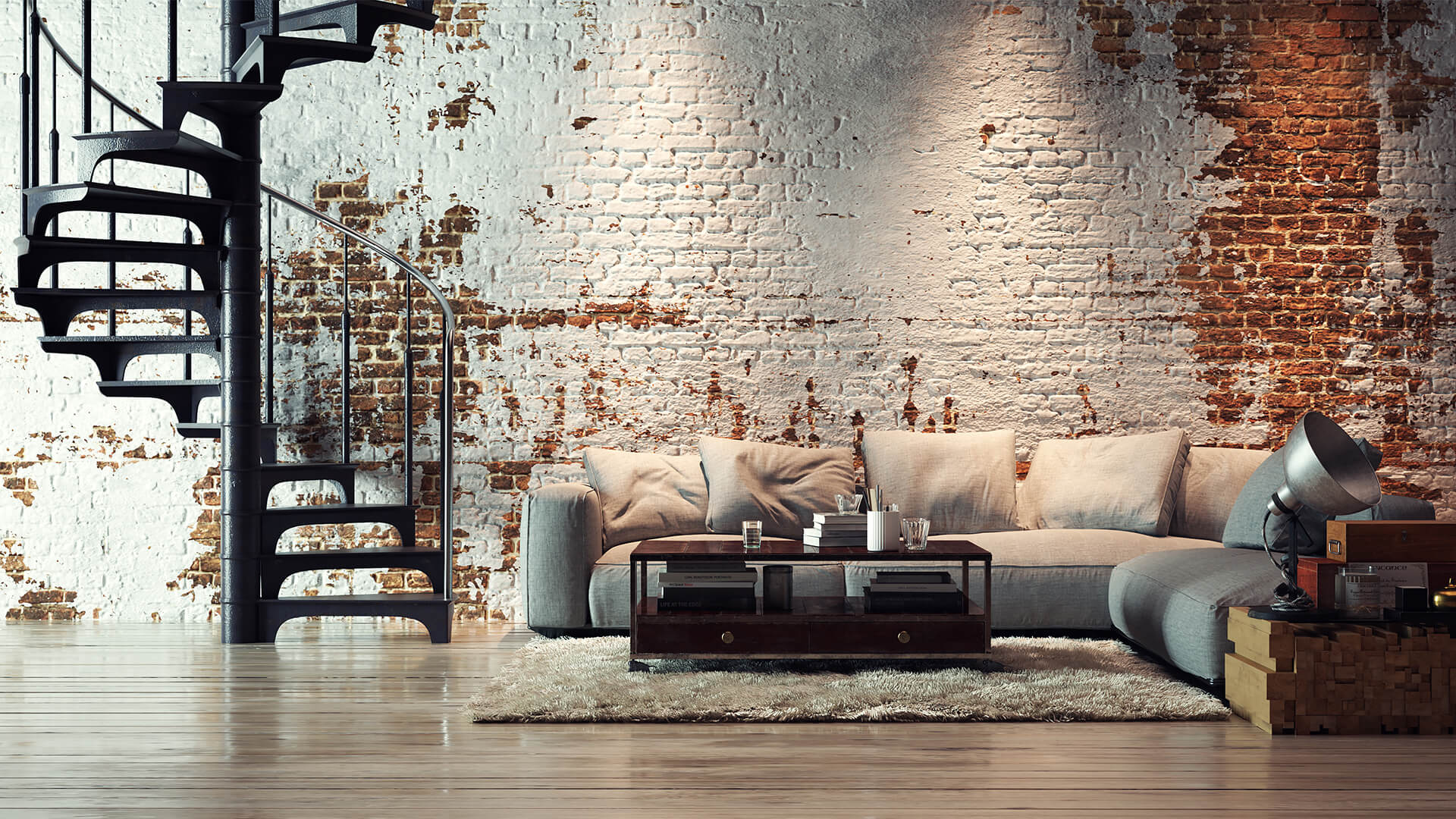By Evelyn Long, Editor-in-Chief of Renovated.
Industrial design is one of the most popular architectural styles in the Western world. It has a minimalist outlook that includes lots of brick, metalwork and other functional materials often found in the industrialised world. The style has evolved and now features brighter and more delicate features.
Here’s how construction and property professionals can incorporate industrial interior design into their projects.
Depth
Homes with industrial designs have wide-open spaces with high ceilings and minimal furniture. This style focuses more on rustic features — brick walls, concrete floors, exposed pipes and miscellaneous factory parts — and other accessories. Large furnishings, circular rugs, long draperies and oversized artwork help emphasise the room’s size and depth.
Original designs from the Industrial Revolution showcase architecture with breathtaking scales. The rooms were tall and wide. The first skyscrapers towered over other buildings. Designers must make their projects exhibit the same qualities, starting with an open floor plan with oversized items that take up the otherwise barren landscape.
Creating an efficient traffic flow is a key part of an open floor plan. Designers must establish clear pathways between furniture to allow occupants to move about freely. A cramped and cluttered space makes for an uncomfortable living environment, but an area with pleasing scales and proportions puts occupants at ease. Large furnishings help establish proper proportions by filling the space and creating clear boundaries.
Shapes
The most visually appealing shapes in industrial interior design are blocks and squares. These shapes promote symmetry, cohesiveness and organisation – three design traits that became top architectural priorities during the Industrial Revolution. An industrial home ought to look orderly and consistent from room to room.
However, the strong emphasis on squares doesn’t mean round shapes are completely off-limits. Designers can still add curves and abstract forms to the space with artwork, round furniture and custom-shaped rugs. These accessories are large enough to draw attention and balance the room’s geometry but small enough to avoid compromising the main blocky features.
Texture
Industrial textures like iron, steel, aluminium, copper and brick are often too cold and abrasive on their own. Designers must offset these gloomy qualities by incorporating features with warm and soft textures. Dining tables, countertops, vanities and other similar locations should be made of wood or stone. These natural elements add more life and vibrancy to the space.
Furniture made of satisfying fabrics such as leather and linen will help make the interior feel cosier. Wool rugs and carpets provide soft footing that contrasts with the room’s rugged outward appearance. Sprinkling modern artwork and the homeowner’s personal artefacts around the space will also counter the brick and metalwork’s rigid and minimalistic nature.
The Industrial Revolution was all about mixing the old with the new, so an industrial designed room should have the same effect. All the large, rustic elements taken from past generations need lustrous modern components to balance the space’s texture.
Lighting
Designers must add ambitious light fixtures to fully illuminate an industrial home’s wide open spaces. Chandeliers, hanging pendants and large floor lamps with exposed decorative lightbulbs will do the trick. Industrial rooms are often extremely tall, so they need lots of vertical fixtures to fill the space between the floor and ceiling.
Natural lighting is another key aspect of industrial design. Skylights, sliding glass doors and curtain walls allow sunlight to fill the room. Plenty of sunlight exposure helps people get better sleep and have improved moods. Industrial designs must maintain their emphasis on natural light despite the availability of other technologies.
Colours
The Industrial Revolution wasn’t known for its expansive colour pallet. It used mostly neutral shades of grey, black and brown. These colours still dominate industrial spaces today, but designers have gotten better at adding more variety.
People’s relationships with colours have gotten more scientific over the years. Researchers have found that the human eye finds natural shades more soothing than rare manufactured ones. Adding touches of green and blue to the otherwise neutral landscape can make the room feel more comforting and less artificial.
Brighter shades are best utilised in small batches. They offer a perfect contrast to the surrounding grey, black and brown features when used in the right quantities. A small pop of orange or yellow against the brick walls or concrete floors can change the room’s entire atmosphere. Designers can experiment with dozens of colour combinations by testing different types of furniture, carpets, rugs and artwork.
Become a Master at Industrial Interior Design
Tackling expansive architectural designs like the industrial style can be intimidating, even for the most experienced professionals. It’s a constant balancing act between previous generations’ functional, minimalistic designs and the abstract, expressive ones of today.
Designers can become masters at this balancing act by prioritising the above five qualities above all else: depth, shapes, texture, lighting and colour. When these features achieve the proper balance between industrial and natural, everything else falls into place.































